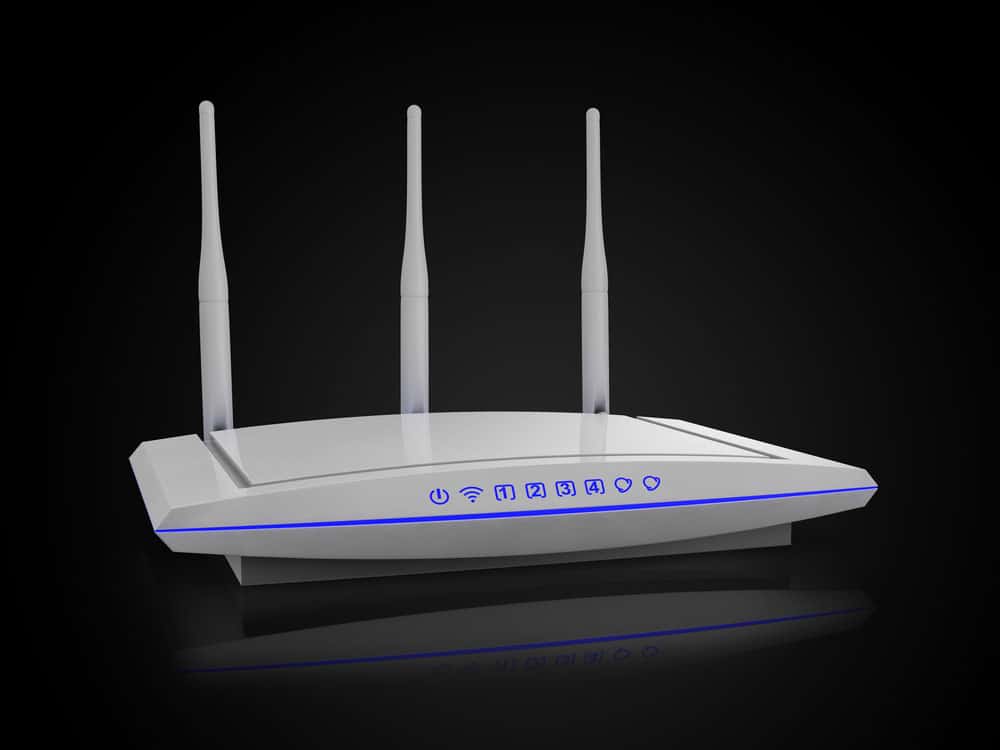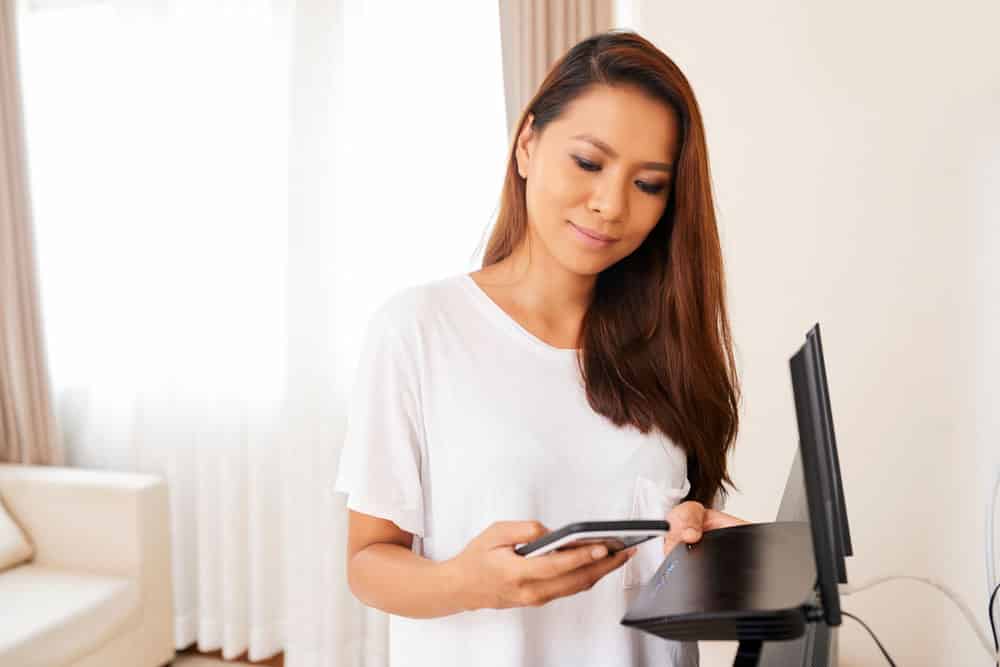Are you considering working from home but being weighed down by the thought of having an unreliable internet connection? Worry not – we’ve got you covered! This guide explains everything you need to know about selecting the best internet speed for working from home.
We cover various factors that affect optimal speeds for different tasks and provide tips on troubleshooting poor connections or low speeds. Read on to learn how to choose the perfect top speed for your work-from-home needs!
Table of Contents
- Different Internet Connections
- How consistent is the connection?
- Reducing Speed Variations
- How fast should my internet be?
- What if your internet is too slow to work from home?
- How much internet speed do you need for Working From Home?
- FAQ
- Summary
Different Internet Connections
If fiber is not available, cable is a good option. Since fiber optics is limited to denser areas, rural residents may need DSL or satellite. These four internet connection kinds are popular!
- Dial-up is a particular type of internet connection that is now virtually obsolete. Instead of broadband, it uses an old phone line which makes for painfully slow speeds and frequent lags in loading times.
- DSL stands for Digital Subscriber Line. It is a broadband connection that utilizes copper wires like phone lines and can be much faster than dial-up. If you’re looking to prioritize your download speeds over uploads, then ADSL (Asymmetric Direct Subscribe Line) would be the better choice.
- Satellite transmission sends data into the atmosphere, where satellites catch it and beam it back to its destination. Even in remote regions, this kind of connection is widely accessible. However, due to the vast distances information needs to traverse, plus harsh weather conditions, speeds can be slower.

Satellite dish cable
- Cable internet utilizes TV cables, which carry data quicker than copper wires. Although the speed of this connection is fairly high and reliable overall, it may become diminished during peak times.
- Fiber-optic cables can handle more data than any of the other connections, coaxial cables, phone lines, or copper wires. Unfortunately, fiber is not widely accessible yet, and only a few city centers currently have coverage.
How consistent is the connection?
Of course, having a quick connection is great, but what you need more than anything else is one that doesn’t disconnect from you.
Ping measures an internet connection’s stability; it’s another term for latency. Let us understand this concept further by breaking down its components:
- Latency is the amount of time it takes for data to reach its destination. Internet connections are highly variable when it comes to latency. In a Zoom meeting between two participants with 100 Mbps connections, one using fiber optics rather than satellite will have far reduced delays.
- Ping is a way to determine latency, the time it takes for a test message to travel from one server to another and be returned back.
Reducing Speed Variations
Router settings
Upgrade your router and keep its software up-to-date for a faster internet connection. To avoid high traffic on the 2.4 GHz Wi-Fi channel, switch over to channels 1, 6, or 11 instead.
Adjust the RTS threshold to 2346 in order to better secure network stability. Make sure the MTU setting is not lower than 1500.
However, if you are using VPN, then opt for a lower value accordingly.

Wireless Router
Router location
To maximize your broadband speed, position the router in an ideal location. Set up your workspace close to it and away from any potential signal blockers like radios, microwaves, or thick/dense walls.
Additionally, ensure that the router is not on the floor. By doing this, you can fully utilize its power and reap all its benefits!

Setting the wifi router with the phone
Throttling
Certain internet service providers have been accused of slowing down or even blocking certain websites and activities after reaching your data limit. To protect yourself, install a VPN and then conduct a speed test outside the 7–11 p.m. peak hours to assess whether any throttling is taking place.
Malware
Malware can infect hardware, software, apps, and web browsers.
This malicious code may degrade your internet connection by running multiple background applications. Never forget to keep your security software up-to-date!
Your own internet activity
You may experience a slower internet connection due to your neighbors’ activity. If you’re uploading large files such as 4K movies or 500GB PDFs, it will strain the network and slow down other devices.
Also, use an Ethernet cord to connect and limit the number of devices connected during activities that require high bandwidth usage.
How fast should my internet be?
The Federal Communications Commission (FCC) firmly recommends a minimum of 5 to 25 Megabits per second (Mbps) for telecommuting. Yet, 50-100 Mbps is best suited for multiple users.
For video meetings and other interactive remote activities, 100-200 Mbps proves to be ideal as it can ensure uninterrupted quality performance.
Furthermore, with the help of a speedy internet connection, you never have to worry about lag or disruptions during important conference calls ever again!

Wifi router with a speedometer
What if your internet is too slow to work from home?
Maintaining optimal speed can be a chore as you juggle online activities like video conferencing and VoIP calls.
Thankfully, here are some useful tips for managing your work-from-home internet:
- Establish parental controls on your home router to limit the times when those in your household can access the internet.
- Maximize the media prioritization or Quality of Service (QoS) feature in your router to ensure that crucial transmissions like video streaming and gaming are prioritized.
- Make the switch from Wi-Fi to an Ethernet cable for a quicker, more reliable connection. After all, interference can cause your signal strength and speed to drop.
- Checking for bandwidth hoggers in your home can help pinpoint the source of lagging internet speeds. Common suspects might include downloading files, playing online games, or streaming videos.
- Upgrade your Wi-Fi access by locating your router in an area close to you, such as a home office. If moving the router is impossible, consider investing in a wireless extender or amplifier for maximum coverage and improved signal strength.
- If you’re unhappy with your current internet service provider’s speed, it may be time to switch providers. You could discover a faster connection and more budget-friendly prices in the process!
- If you’re having trouble with internet speeds and don’t need the security of a VPN, try disabling it to see if your performance improves. You may be surprised at how much faster connections can become when your VPN is not running!
How much internet speed do you need for Working From Home?
Zoom and other video conferencing applications
8 Mbps is ideal for a smooth video call! For smooth conferencing, coder metrics like download/upload rates and latency should be 150ms or below.
Disable your camera to improve upload speeds. Ethernet cables are another option. Thus, virtual meeting performance is optimized!

Online video conferencing
Email and chat application
Simple chat and email communications require 1 Mbps per instance. However, sending videos or photos in chats or downloading big email attachments like graphics may use more bandwidth.
Texting doesn’t utilize bandwidth with Google Hangouts, Facebook Messenger, Slack, etc. So you may work on other projects.
Web browsing
It is suggested that each person has a 5 Mbps download speed for extensive web browsing. With video autoplay enabled, social media requires a much faster connection. A web page uses 2 MB, and a download speed of 16 Mbps is excellent for loading in under 1 second. Loading a web page only necessitates downloading content once.
Best Internet Speed For Working From Home: Stream media
We recommend a 5 Gbps download speed for a resilient and stress-free workflow. Since video content uses a lot of bandwidth, remember to include Netflix and YouTube! Working from home requires a business-appropriate internet allowance.
Best Internet Speed For Working From Home: Sharing large files
Check your internet bandwidth before transferring huge files. Sharing large files quickly requires a 10 Mbps download and upload rate. File-sharing is fast with this speed.
FAQ
How fast is the average internet connection in the United States?
Speed test results across the United States indicate an average internet speed of 42.86 Mbps, comprising many different tiers and locations.
However, this overall statistic may not reflect your individual needs or circumstances.
Is it beneficial to turn off video during meetings?
By turning off your video, you can free up bandwidth which will, in turn, improve the audio of a conference call.
Furthermore, participants can disable their camera feed to reduce the shared load. And this is especially helpful if they don’t need to appear on the screen.

Video Conference Slow Internet Connection
What causes my internet to slow down at times?
If a copious amount of people in the same vicinity are on your provider’s network all at once, you may experience weakened speeds on services such as cable and DSL.
Summary
In short, the best internet speed for working from home depends on your work and how many people will use it.
If you’re the only internet user, you can get by with a minimum download speed of 5 Mbps.
However, if multiple people work from home or stream video, you’ll want speeds closer to 25 Mbps.
And remember, these are just averages. There will always be areas with better or worse internet access anywhere in the world.
